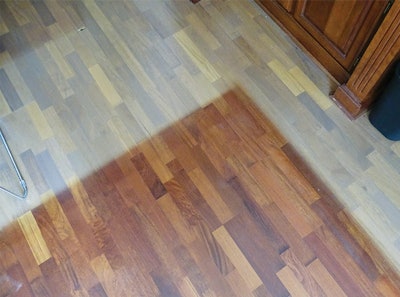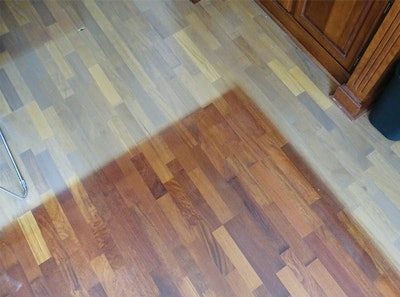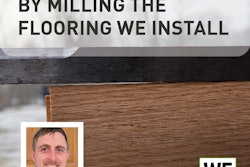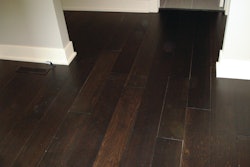
 Given enough time in direct sun, most woods will fade to a silvery-gray color; this merbau floor had a drastic color change in just three years. (Photo courtesy Courtesy of Roy Reichow)
Given enough time in direct sun, most woods will fade to a silvery-gray color; this merbau floor had a drastic color change in just three years. (Photo courtesy Courtesy of Roy Reichow)
Dr. Alex C. Wiedenhoeft, research botanist and team leader at the Center for Wood Anatomy Research at the U.S. Forest Products Laboratory in Madison, Wis., answers:
In this column in the June/July 2019 issue of Wood Floor Business, we addressed woods that darken with exposure to light—but what about woods that lighten with exposure?
Perhaps the most heartbreaking case of a wood lightening with exposure to light is purpleheart (Peltogyne spp.). Unless you store it in your sock drawer, the prized deep, rich purple of the heartwood quickly fades to a sad and rather undistinguished light brown. As with wood darkening on exposure, color change is a chemical change, in this case strictly photochemical, as the color change is restricted to the outer surface of the wood—the wood beneath remains purple (not that it does us any good). These changes take place even in comparatively low-light conditions like we find with indoor fluorescent lighting. More commonly used flooring woods like oak and hickory can also lighten with exposure, especially with exposure to direct sunlight, where UV light plays an important role.
Given enough time and intensity of UV exposure, virtually all woods fade to silvery-gray if left unprotected. UV light breaks chemical bonds in the chromophores that give wood its color. Those broken chemicals lose their color, and the wood "bleaches." This can happen indoors and even in the presence of a wood finish, especially if that finish doesn't have UV-blocking properties. This can cause a wood floor to lose the luster and richness that was envisioned when first installed, and this color change can be either shallow or deeper into the wood, so that sanding and refinishing may not be adequate.
RELATED: Worrisome Wenge: Why Did This Wood Floor Fade?
































